China boasts some of the most diverse topography in Asia, and arguably the world. From the karst peaks in Guizhou, Guangxi and Yunnan to the Gobi Desert in Gansu and the verdant grasslands of Inner Mongolia, the Middle Kingdom has it all.
The country is a real beauty, and we’re happy to call it home. But traveling in China, like most places, can present an obstacle or two along your journey (read: tourist traps). They suck, we know, and in the Middle Kingdom they’re embarrassingly present just about everywhere. However, if you can tough out the crowds (or arrive early), you’ll see why avid travelers are big on the country.
We’ve come up with a list of must-visit places in each of China’s 34 provinces, autonomous regions, special administrative zones and municipalities to give you a little taste of what this incredible nation has in store. Some places will be familiar (maybe you’ve been, or perhaps your co-worker Karen won’t stop bragging about her recent trip there), while others will be new and exciting.
So, whether you’re a longtime China resident or a college student in Madrid who doesn’t even know the phrase ni hao, this list is for you:
Anhui
Huangshan

Image via Pixabay
If you happen to find yourself in Anhui province, make sure to stop over at Huangshan, one of China’s Five Great Mountains. On this mountain range in eastern China, your eyes will widen at the view of misty clouds rising over twisting pines, rocky peaks and a mesh of other natural scenery unrivaled elsewhere. It’ll likely take more than a day to climb up and down Huangshan, so be sure to make a reservation at one of the mountaintop hotels.
Location: Tangkou, Anhui
Best time to go: Autumn is the best time to visit, unless you enjoy the rain
Why bother: Hiking, awesome viewpoints, really cool trees and even a cool temple for those looking for a bit of culture
Entrance fee: RMB150 to RMB230
Beijing
The Forbidden City

Image via Unsplash
The Forbidden City is known as the No. 1 scenic spot in Beijing for good reason: the world-famous historic site is huge and magnificent. Walk along the same paths that former emperors once laid claim. Wear comfortable shoes, though, because – it bears repeating – the place is huge.
Location: Beijing, Tiananmen East Metro Station
Best time to go: Anytime, we’ve heard it’s even lovely in the winter under a blanket of snow
Why bother: Because while China may have changed a lot in the last 500 years, this hasn’t; also, the site offers a huge dose of Chinese culture
Entrance fee: RMB60
Chongqing
Yangtze River Cruise

Image via Pixabay
One of the best things to do in Chongqing (aside from feasting on Chongqing’s much-loved hot pot) is to cruise down the Yangtze River to the Three Gorges Dam. On this relaxing getaway, you’ll gasp at breathtaking views of the three gorges and plenty of other scenery along the riverbanks (just redirect your eyes from the numerous factories spotted along the way). It usually takes about 36 to 50 hours to reach the Three Gorges, depending on which type of boat you take.
Where: Chongqing
Best time to go: Summer
Why bother: Epic scenery
Entrance fee: Cruises ranges from RMB200 to RMB2,000
Fujian
Gulangyu Island

Image via @div_china/Instagram
Gulangyu Island is a small international settlement just a short boat ride off the coast of Fujian. The island has banned not only cars, but also bicycles, making this slice of land as pedestrian friendly as it gets. About 20,000 residents live here permanently, and the island still boasts an old European feel thanks to the many churches, consulates and other colonial-style buildings lining the island’s backroads.
Where: Xiamen, Fujian
Best time to go: Anytime
Why bother: A mix of international and Chinese architecture
Entrance fee: RMB35 (there and back)
Gansu
Mogao Grottoes
 Image via Pixabay
Image via Pixabay
The Mogao Grottoes of Gansu hold the largest collection of Buddhist art in the world. Tang Dynasty records indicate that a legendary monk, who lived in 16 states, had a vision here in which he saw one thousand Buddhas drenched in golden light beams. This inspired him to begin constructing the grottoes, which saw development over 10 dynasties. In cave No. 17, also called the ‘Library Cave,’ over 15,000 paper books and 1,100 bundles of scrolls were discovered. The sheer volume of artwork here is believed to be enough to fill a 25-kilometer-long art gallery.
Where: Dunhuang, Gansu
Best time to go: The Grottoes are closed if it’s snowing or stormy, so temperate weather is best
Why bother: Buddhist art and spiritual caves
Entrance fee: RMB258 high season, RMB160 low season
Guangdong
Mount Danxia

Image via That's
While Guangdong has a plethora of scenic locations, Danxia Mountain and the Yangyuan Stone are the must-see spots, and not simply because of the aforementioned rock’s remarkable resemblance to an erect phallus. The natural geography of the mountain looks like the baleen teeth of a blue whale rising out of the surrounding green forests, making for one of South China’s most fascinating natural sites.
Where: Renhua county, near Shaoguan city
Best time to go: Anytime (after all, it’s Guangdong)
Why bother: Fascinating sites dating back to various dynasties, a penis-shaped rock
Entrance fee: RMB100
Guangxi Autonomous Region
Yangshuo Karst Mountains

Image via Jesse Pottinger for That's
Have you ever looked at a Chinese landscape painting and thought, “What? Mountains don’t look like that, why do they draw such stylized, unrealistically steep mountains?” Well, the karst mountains of Guangxi actually do look like steep, fat obelisks rising straight out of the ground. A bike or boat ride through the scenic backpacker hideout of Yangshuo is our top recommendation in the province, and easily one of the coolest things to do in Guangxi.
Where: Yangshuo, Guangxi
Best time to go: Anytime but winter
Why bother: Really cool-looking mountains, long bike rides, Guilin mifen on every street corner
Entrance fee: Free
Guizhou
Jiabang Rice Terraces

Image via @leipuikei/Instagram
The Jiabang Rice Terraces of Guizhou are said to be some of the most beautiful rice terraces in China, and let’s be honest, there are plenty of similar landscapes in the Middle Kingdom. But these really take the cake – they even look a bit like a layer cake, in fact. The Jiabang Rice Terraces are relatively hard to get to, so they aren’t overflowing with tourists like other scenic spots. As such, it’s still possible to get that perfect shot without some passerby’s bright orange backpack and North Face jacket caught in the frame.
Where: In the countryside, about 110 kilometers from Congjiang, Guizhou
Best time to go: While anytime is fine to visit, the winter might get a little chilly
Why bother: Beautiful sloping terraces, misty and mysterious views, an awesome Instagram shot
Entrance fee: Depends on your bargaining skills, but RMB150 should score you a taxi out to the terraces
Hainan
Beaches of Sanya
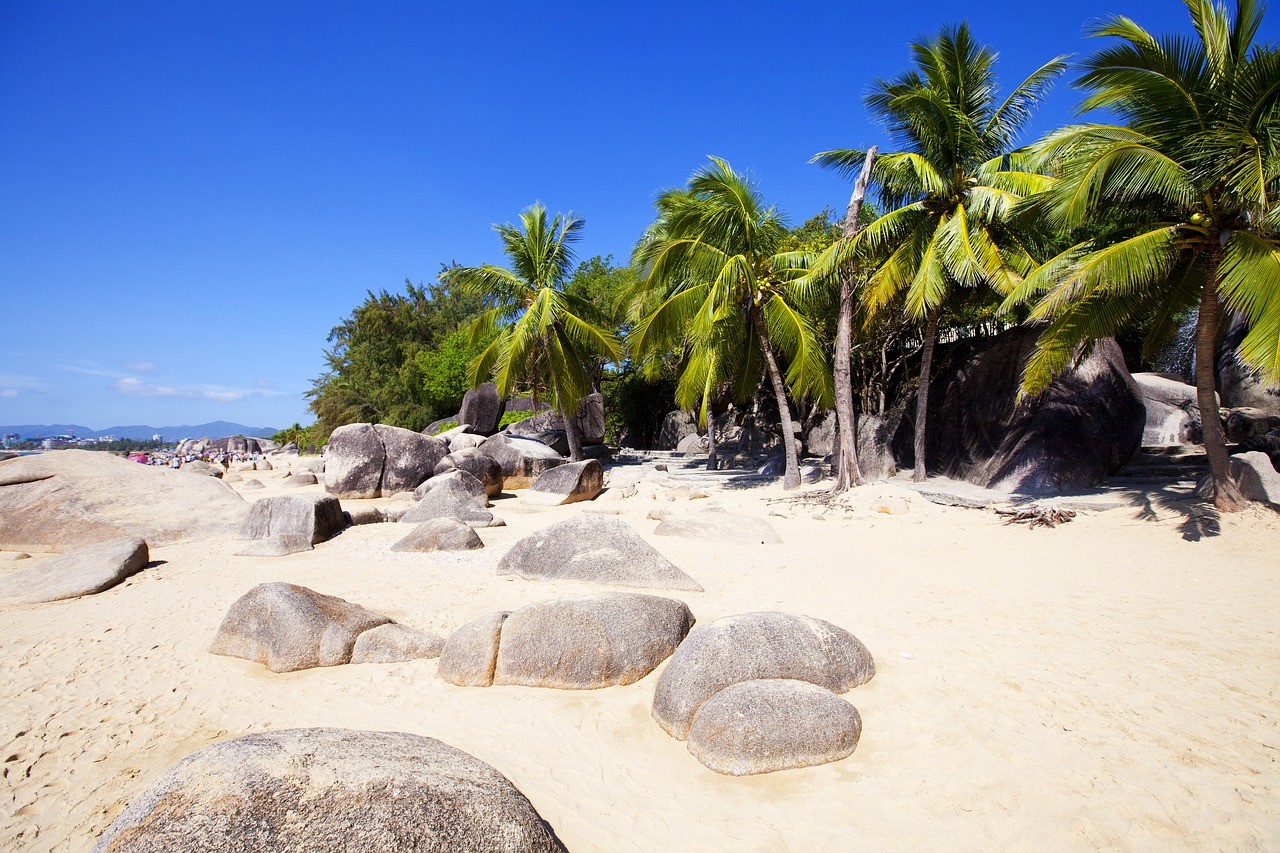
Image via Pixabay
Hainan is best known for its beaches. While there are other things to do in the island province, nothing surpasses the beauty of the sandy seaside. If you aren’t into the sand and saltwater vibes, you might find yourself at a loss here. But honestly, who doesn’t enjoy a few carefree hours spent barefoot with a drink in hand? We recommend checking out Yalongwan, Sanya: With its slightly rocky coast, punctuated by stretches of soft and sandy terrain, it is the perfect place to buy your beachside coconut and take a few Instagram-worthy selfies.
Where: Sanya
Best time to go: Anytime (although typhoon season can be touch and go)
Why bother: Beach on beach on beach
Entrance fee: Free
Hebei
Hongyagu Glass Suspension Bridge

Image via @radioclass/Instagram
Sharing a border with China’s capital city, Hebei is a treasure trove of architectural marvels. There are floating bridges, a modern Muslim cultural center, beachside chapel and even parts of the Great Wall. But given the presence of the Wall elsewhere, we recommend visiting a more recent man-made masterpiece – Hongyagu’s glass suspension bridge. Located in Shijiazhuang, it is currently the longest glass bridge in the world. And while it isn’t the highest, we’re fairly confident that you won’t be up there complaining that you’re not far enough from the ground – heights-averse visitors be warned.
Where: Shijiazhuang
Best time to go: When it’s not snowing
Why bother: To overcome your fear of heights
Entrance fee: Prices vary
Heilongjiang
The Harbin International Ice and Snow Festival

Image via Pixabay
The month-long Harbin Ice and Snow Festival is renowned around the globe for its stunning ice structures – some among the world’s largest. Every year, visitors flock to Harbin from throughout China and abroad to meander the festival grounds, which feature massive ice sculptures and ice castles, as well as an ice lantern show that beams from the surrounding snowy wonderland. Rumor has it that the festival is less crowded than other major attractions, but you’re still best to avoid Chinese holidays, when even some random duck pond in rural Guizhou is bound to have a line at its entrance.
Where: Harbin
Best time to go: December and January
Why bother: The colors, the ice
Entrance fee: RMB220-300 depending on the venue
Honorable mention: The Siberian Tiger Park – where you can feed live chickens to tigers. If you’re hoping the chicken wins, that’s not how the story turns out.
Henan
The Longmen Grottoes

Image via @Archaeology_aia/Instagram
The Longmen Grottos in Henan are a network of caves, holes and niches containing approximately 100,000 Buddhist statues. At 36 meters wide and 41 meters long, Fengxian Temple is the largest of the grottoes and features nine imposing figures of varying appearance. Sadly, many of the effigies are no longer fully intact – the result of years of plundering by shameless foreigners at the beginning of the 20th century, with further damage potentially caused amid the chaos of the Cultural Revolution. Nonetheless, the Longmen Grottoes are an absolute must-visit spot when in Henan, just be sure to keep your paws off the structures that remain.
Where: Luoyang, Henan
Best time to go: Hours of operation are slightly shorter in the winter, so maybe any other season
Why bother: You can never see too many religious artifacts
Entrance fee: RMB120
Hong Kong
Victoria Peak

Image via Pixabay
Sure, everyone does it, but Victoria Peak is by no means overhyped. After all, if you aren’t hiking an incredible trail by day and boozing around the streets of Lan Kwai Fong in the evening, are you even really in Hong Kong? At 552 meters, it is the highest peak in the Special Administrative Region. The ascent is filled with beautiful flora and fauna, and at the top, hikers are rewarded with stunning views of the dense urban jungle below. Plus, you’re less likely to run into the hand-sized spiders that hang dangerously close to Dragon’s Back trail.
Where: Near Garden Road
Best time to go: Whenever the weather is good
Why bother: Because everyone else is doing it, worth seeing once
Entrance fee: Free (the Peak Tram costs HKD52 round trip)
Hubei
Shennongjia Nature Reserve
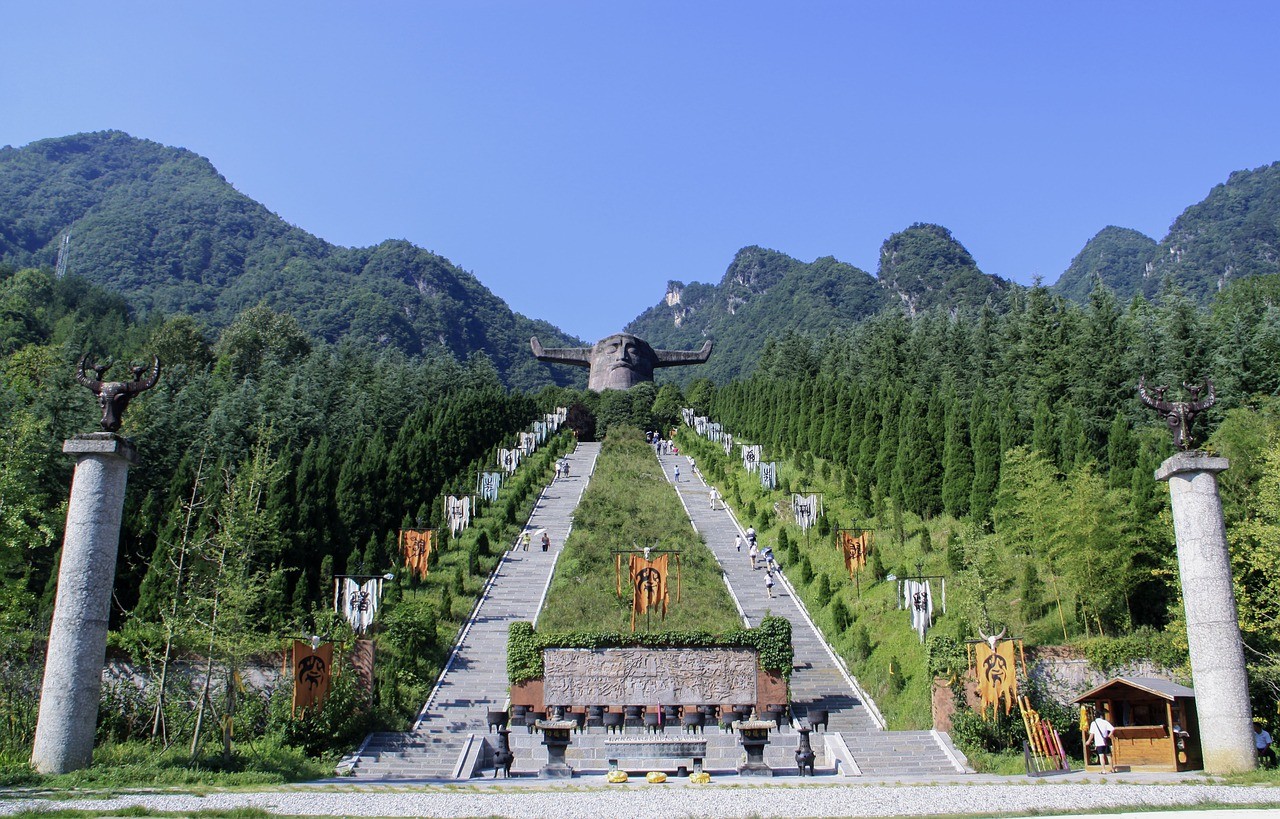
Image via Pixabay
Shennongjia Nature Reserve draws hordes of tourists each year for its breathtaking scenery and rare animal and plant species. The landscape is vast and varied, with numerous caves, towering mountain peaks, rivers, ancient trees and abundant flowers. Want to see a Chinese giant salamander in its natural habitat (you know, not illegally sold in a wet market)? You’ll find them here. Same goes for the golden snub-nosed monkey, clouded leopard and Asian black bear. But be warned, Shennongjia is also (allegedly) home to the yeren, a mythical bigfoot-like creature. The elusive beast has yet to be caught, but that doesn’t mean it won’t devour you in your sleep.
Where: Shennongjia
Best time to go: May to October, but the low season will be cheaper and offers a different attraction: two ski resorts and a winter landscape
Why bother: You could be the first person to capture a yeren
Entrance fee: A combo ticket (covering all major sites, valid for five days) ranges from RMB130-269 depending on the season
Hunan
Wulingyuan Scenic Area
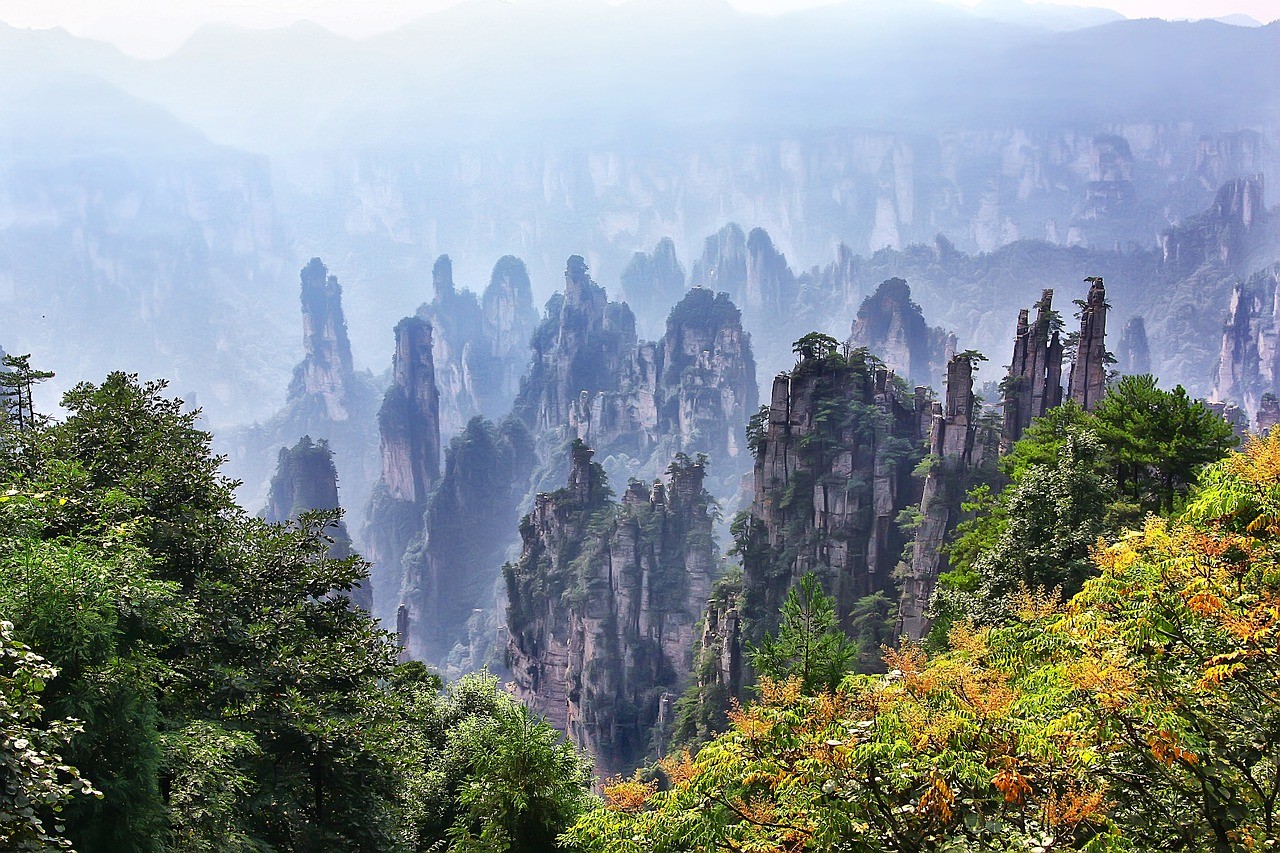
Image via Pixabay
If you’re looking at photos of Wulingyuan Scenic Area and thinking the place looks familiar, it may be because the landscape inspired the setting for the fictional land of Pandora in Avatar. There are three notable destinations within the scenic spot: Tianzi Mountain Nature Reserve, Suoxiyu Nature Reserve and Zhangjiajie National Forest Park. We also recommend a leisurely float down the Maoyan River. A cruise on the winding waterway will last about three hours, and along the way, you’ll pass a myriad of scenic spots, including Shuidongzi Waterfall and Wentang Hot Spring.
Where: Wuling district, Zhangjiajie
Best time to go: April to October, with the months of April and October being the best
Why bother: Topography like nowhere else on the planet
Entrance fee: RMB139-248 depending on season; renting a raft costs RMB114, or RMB124 for a powered raft
Inner Mongolia
The Grasslands

Image via Pixabay
If you travel to the crescent-shaped autonomous region of the North, it would be foolish to leave without a trip to the grasslands – undoubtedly the top destination for travelers to Inner Mongolia. Venture to one of several grasslands that lay beyond Hohhot, and you’ll be greeted by smiling Mongolian people, grazing livestock and traditional yurts scattered across the grassy expanse. It is a fantastic place to experience Mongolian culture and cuisine while in China, and a great opportunity to get away from the hustle and bustle of city life. Unplug and relax, surrounded by nature, with gorgeous sunsets and unobstructed views of the starry night sky.
Where: A couple hours’ drive from Hohhot
Best time to go: Spring and summer
Why bother: To experience Mongolian culture
Entrance fee: Go on your own and just pay for a room, or book a tour through your accommodation in Hohhot; prices vary
Jiangsu
Zhouzhuang Water Town

Image via Pixabay
A mere 30 kilometers southeast of Suzhou, Zhoujuang Water Town is well worth a visit and makes for a peaceful stroll at any hour of the day. The majority of the town’s infrastructure was built during the Ming and Qing dynasties, with phenomenally preserved ancient homes still lining the pristine waterways. Local culture is also on full display: Learn about the folklore, legends and traditions from the town’s residents, and ask about ‘granny tea’ or the Wansan home-style banquet. Among the various scenic spots, the area is known for its beautiful bridges, Milou Tower and Chengxu Taoist Temple.
Where: Kunshan city
Best time to go: Year-round
Why bother: One of the most famous water towns in China
Entrance fee: RMB100 including scenic spots, RMB80 at night
Jiangxi
Wangkou, Xiaoqi and Lingjiao Villages

Image via Pixabay
Wuyuan county’s 1,000-plus year history and ancient villages make it among the most incredible destinations in Jiangxi province. Few places in China better display ancient Huizhou culture than the villages of Wangkou, Xiaoqi and Lingjiao: Each boasts the phenomenal architecture that has existed here for centuries, with the surrounding pastoral landscape serving as an equally captivating setting. Hiking is the ideal mode of transport within the villages, but some can also be explored by bicycle. There’s not much to do here, per se, the draw is simply to wander through the quaint little towns and absorb the riches of countryside simplicity.
Where: Wuyuan
Best time to go: March and April
Why bother: Rural serenity
Entrance fee: RMB60 to enter each village
Jilin
Goguryeo Ancient Sites

Image via @heartwarming_hun/Instagram
Standing testament to the now-vanished Goguryeo civilization that once thrived in the northern Korean peninsula and northeastern China, the Goguryeo ancient remnants include fascinating tombs, former capital cities and a monument to the Goguryeo Kingdom’s 19th emperor. Among the 7,000-plus tombs, the General’s Tomb – also referred to as the ‘Oriental Pyramid’ – is one of the most impressive, resembling pyramids from past civilizations of the Americas and Egypt. Exploring these ancient sites, visitors can learn what little is known about the mysterious kingdom.
Where: Ji’an and throughout Jilin
Best time to go: May to September
Why bother: To learn about a mysterious, faded empire
Entrance fee: RMB100
Liaoning
Mukden Palace
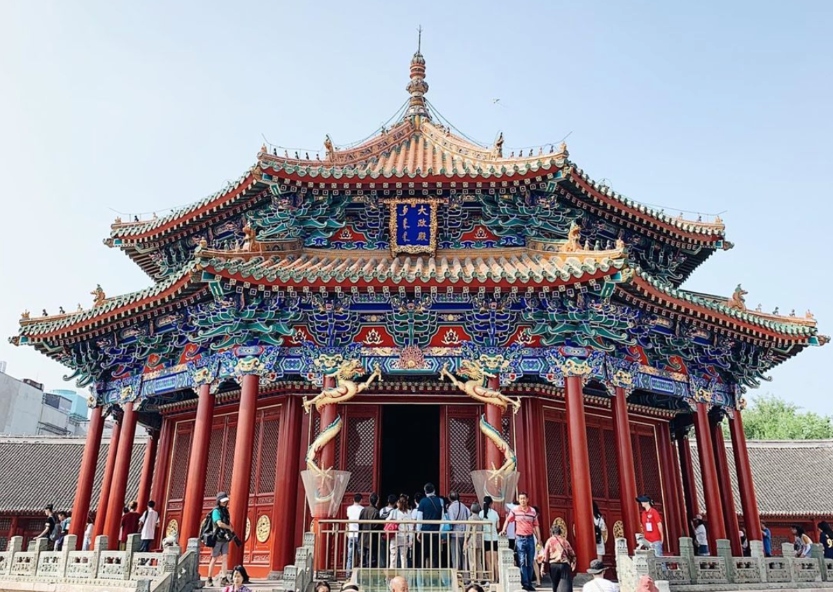
Image via @Simplynicky/Instagram
Liaoning’s answer to the Forbidden City, Mukden Palace, located in Shenyang, is about one-twelfth the size of its counterpart in Beijing. But what it lacks in size, it makes up for in its grandeur. Constructed in 1625 and completed in 1636 by father and son Nurhachi and Huang Taiji – two of the Manchurian Qing Dynasty’s founding emperors – it is the only remaining royal palace outside of the capital. Its three sections contain architecture that blends Manchurian, Mongolian and Han elements, with impressive towers, halls, gates and pavilions, as well as numerous Qing-era cultural relics.
Where: Shenhe district, Shenyang
Best time to go: Anytime
Why bother: Authentic exposure to the remnants of the Manchurian Empire
Entrance fee: RMB60
Macao
Ruin of St. Paul’s

Image via Pixabay
Macao was a Portuguese territory until 1999, and the architecture and cuisine here still reflect the SAR’s colonial past. There is perhaps no better place to feel the lingering Portuguese influence than the Historical Center of Macao. The area contains 22 notable buildings and public spaces recognized by UNESCO. While we highly recommend you skip the slot machines for a day and dedicate hours to exploring the entire historic center, if you see only one thing, let it be the Ruins of St. Paul’s. The storied church – or rather the shell that remains – demonstrates the fusion of architectural styles that the city is known for.
Where: Macao’s city center
Best time to go: Anytime
Why bother: Besides casinos, it’s the defining monument of Macao
Entrance fee: Free
Ningxia Hui Autonomous Region
The Western Xia Imperial Tombs

Photo via @Je_ccruz/Instagram
Spanning more than 50 kilometers, the Western Xia Imperial Temples contain nine imperial tombs and 253 additional tombs (discovered tombs, anyway). Constructed by the Western Xia Kingdom (1038-1227), they rival some of the most famous tombs elsewhere in China. Aligned to resemble celestial bodies, historical records indicate that they were also modeled after the Song Dynasty tombs of Hebei province. The tomb grounds also demonstrate a complex infrastructural layout, with remnants of roads, courtyards, houses and wells. There is perhaps no better place in China standing testament to the accomplishments of the Western Xia Kingdom.
Where: Yinchuan
Best time to go: May to October
Why bother: To ponder the mysteries of this amazing site... and to feel like Indiana Jones for a day (minus the tomb robbing, please)
Entrance fee: RMB75
Qinghai
Qinghai Lake
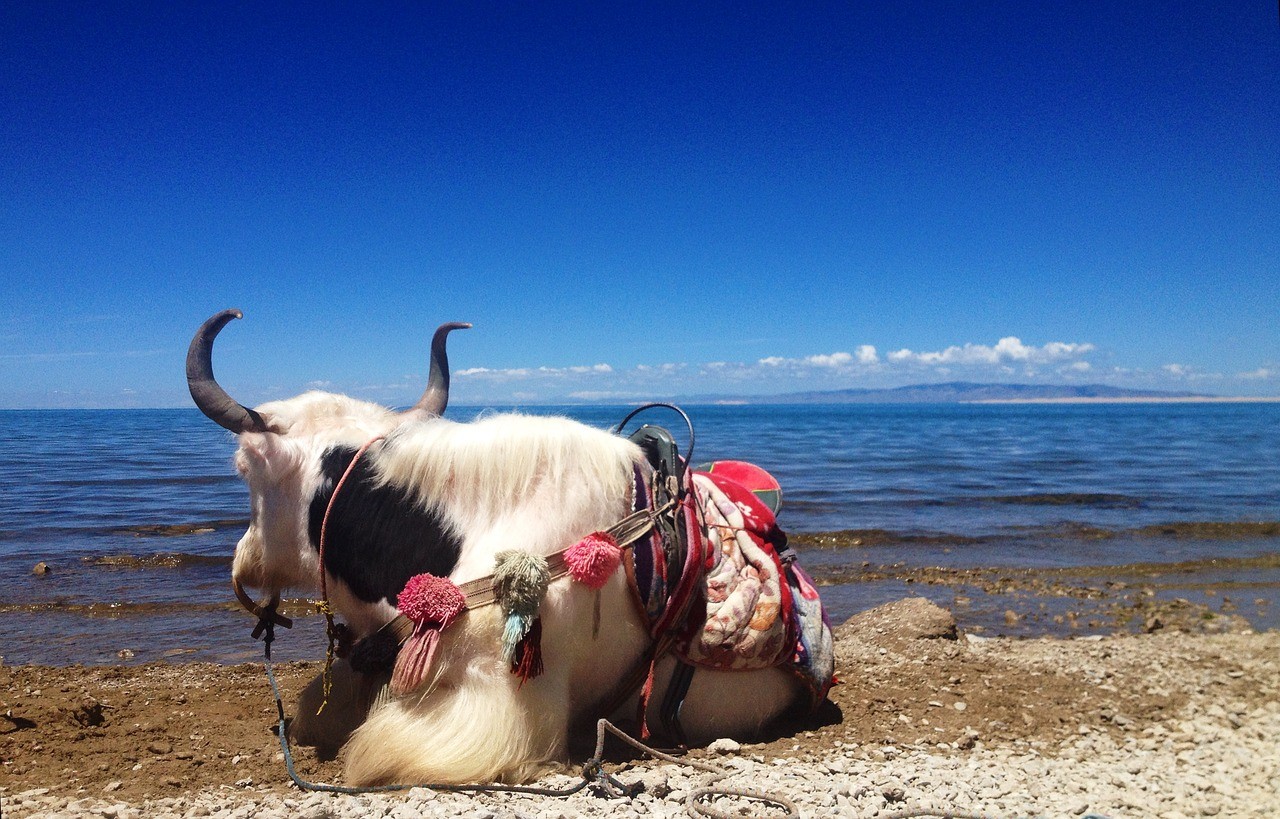
Image via Pixabay
One of the largest lakes in China, Qinghai Lake is fed by more than 40 rivers. The area is a sanctuary for rare species of birds and a variety of other wildlife. As temperatures rise after winter, visitors are treated to blooming fields of yellow rapeseed flowers and grassy plains dotted with grazing sheep and yaks. Among the lake’s most famous sites – Haixin Shan, Shadao, Fairy Bay and Erlangjian Scenic Area – you’ll find temples, springs, islands and swimming spots, and wherever you go, you’ll feel nothing but kindness from local residents. We recommend spending a week cycling around the massive body of water.
Where: 150 kilometers from Xining
Best time to go: Summer
Why bother: Peace, tranquility, nature, Tibetan culture – it really is a magical place
Entrance fee: The lake itself is free to visit, with particular sites varying in price from RMB35-100
Shaanxi
Terracotta Warriors

Image via Jesse Pottinger for That's
When you explore the Terracotta Warriors tourist area, you’ll see several signs noting their consideration as the ‘Eighth Wonder of the World.’ As you learn more about the thousands of figures, it’s not hard to see why. Sure, it is a bit pricy to enter, and you don’t need a ton of time here, but the sheer volume of soldiers, animals and various other figurines, both unearthed and still buried, makes for an incredible history lesson – an absolute must when in Xi’an. Discovered by farmers in 1974, much of the excavation work is still underway today, with the emperor’s tomb remaining entirely untouched.
Where: Lintong district, Xi’an
Best time to go: Any time of year, before 10am or in the early afternoon to avoid crowds
Why bother: A fascinating piece of archeology that you have to see to fully appreciate
Entrance fee: RMB200
Shandong
Taishan

Image via @lifeof_steve/Instagram
You’ve eaten one too many dumplings, slurped up your body weight in noodles and drank so many Tsingtao that you’re starting to permanently smell like hops (okay, we might be projecting a bit). It’s time for a little exercise: enter Taishan. Considered the most sacred of China’s ‘Five Sacred Mountains,’ emperors from various dynasties made pilgrimages here, with an estimated 72 in total seeking the wisdom of Taishan’s fabled peaks. Choose from one of four routes up the mountain, each with its own charms and features that make this natural monument of history one of China’s most famous sites.
Where: Tai’an
Best time to go: Summer and fall
Why bother: Absorb the energy of China’s most revered mountain
Entrance fee: RMB127 peak season, RMB102 offseason
Shanghai
Former French Concession
 Image via @Teikbenglim/Instagram
Image via @Teikbenglim/Instagram
It’s pretty much a given that visitors to the ‘Pear of the Orient’ are going to hit up the Bund, and more than likely that they’ll also hop across the river to ascend one of Shanghai’s famous skyscrapers. So, for the sake of naming just one thing to do, we recommend strolling through the Former French Concession. The area is architecturally magnificent, with old European-style buildings that stand in stark contrast to the massive towers in the distance, and the tree-lined streets play host to a variety of swanky shops, music venues, cafes, eateries and bars.
Where: Huangpu and Xuhui districts
Best time to go: Whenever the weather is decent
Why bother: Shanghai is a high-energy, fast-paced city, and the Former French Concession makes for a pleasant reprieve from the craziness
Entrance fee: Free
Shanxi
Hengshan Hanging Temple

Image via @jolanda_bakker_photography/Instagram
Whoever had the idea to build this – respect, because the calculated gamble of building a temple on a steep mountain’s edge paid off: Once constructed, the mountain served as protection from sunlight, flooding and weathering. Construction on the architectural wonder began in 491 CE and the temple saw reconstruction during the Ming and Qing dynasties. But it isn’t just the architecture that makes the structure unique, it also serves as a monastery for not one, not two, but three religions – showcasing Buddhist, Confucian and Taoist symbolism and elements within its fortifications.
Where: Hunyuan county, Datong
Best time to go: April to October, 8-10am to avoid crowds
Why bother: Architecture like no other
Entrance fee: RMB130, RMB125 during the low season
Sichuan
Jiuzhaigou National Park

Image via Pixabay
Located 450 kilometers north of the provincial capital, Jiuzhaigou – meaning ‘nine village valley’ – earns its name from the nine Tibetan villages scattered throughout its majestic landscape. Verdant forests break to reveal astonishingly colorful bodies of water, including the ‘Five-Colored Lake’ and a 300-meter-wide waterfall. Three interlinking valleys make up the area – Shuzheng, Rize and Zechawa – and you could spend hours exploring here, so it’s best to reserve as much time as possible. You may want to book a guide and tour bus to make the most of the experience. Alternatively, you can hike through the villages via connecting trails in six to seven hours.
Where: Jiuzhaigou county, northern Sichuan
Best time to go: September and October
Why bother: Unreal photo opps, incredible views
Entrance fee: RMB80 low season, RMB190 high season
Taiwan
Suhua Highway
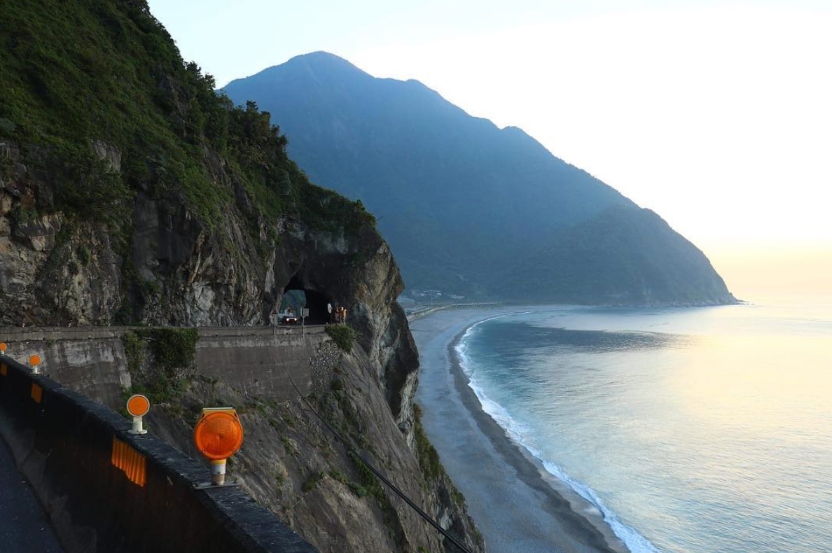
Image via @tyhsiao/Instagram
The Suhua Highway is considered the most dangerous highway in Taiwan, but if you’re confident in your driving ability, the unbelievable views make it well worth the trip. Connecting the island province’s North and East sections, from Hualien to Yilan, it runs along towering marble and gneiss cliffs, passing through tunnels and along winding curves, with unbeatable views of the Pacific Ocean. Along the route, you can stop at several off-the-beaten-path tourist sites, abandoned portions of old highway and several small villages. The highway stretches 118 kilometers and it takes about three hours of straight driving to get from one end to the other.
Where: Northeastern coast of Taiwan
Best time to go: April to June, September to November (avoid rainy periods)
Why bother: Stunning views, freedom to explore a less touristy part of the island
Entrance fee: Car rental will cost RMB300-500 per day
Tianjin
Former Foreign Concessions

Image via @dog_from_the_blue_plan/Instagram
The municipality of Tianjin outnumbers everywhere else in the country when it comes to the number of foreign concessions within its territory with a total of nine, including Belgian, French, German, Italian, Austro-Hungarian, Russian, British, American and Japanese. Each displays varying elements reflective of its corresponding former administrative nation, standing as relics of colonial influence in a city that boomed in the decades prior to World War II. Stop by Italian Style Town for some fantastic pizza and architecture, or stroll past old bank buildings and St. Joseph’s Cathedral in the French Concession.
Where: Throughout Tianjin
Best time to go: Anytime
Why bother: Beautiful Colonial Architecture
Entrance fee: Free
Tibet
Everest Base Camp

Image via Pixabay
Even if you don’t have a ton of time to spare, tours in Tibet (compulsory for foreigners visiting the autonomous region) offer overnight visits to Everest base camp and a trip here is arguably one of the coolest things you can do in a region that is famously abundant in cool activities – it is the tallest mountain in the world, after all. The camp is lower in elevation than its counterpart in Nepal, and Tibet itself is higher up, making the acclimatization process less daunting. Magnificent peaks, (somewhat literally) breathtaking views and snowy terrain, what more do you need to hear?
Where: Tingri county
Best time to go: April, May and October
Why bother: To say you’ve been to Everest
Entrance fee: Tour prices vary
Xinjiang Uyghur Autonomous Region
Karakoram Highway, Kashgar

Image via Pixabay
The 1,300-kilometer-long Karakoram Highway connects China’s expansive Northwest to Pakistan and is arguably one of the most incredible vehicular routes in the world. Leaving Kashgar, you can visit the town of Upal, and then make your way to Tashkurgan for the evening. The city is home to China’s famously hospitable Tajik ethnic minority and is surrounded by beautiful mountainous terrain. On the Chinese side, you’ll also find Red Mountain, White Sand Lake, Karakul Lake, Subash Pass, grasslands and more. And should you travel to the Pakistan side of the highway, the sights only get more incredible.
Where: Runs from Kashgar in Xinjiang to Gilgit-Baltistan in Pakistan
Best time to go: Spring, early autumn
Why bother: To explore the road less traveled (by tourists, anyway)
Entrance fee: The road itself is free, but tourists will need to acquire a permit
Yunnan
Tiger Leaping Gorge

Image via @yann2705/Instagram
The air – pure; the land – verdant; the locals – warm and welcoming. It’s no wonder Tiger Leaping Gorge is among the most popular hiking spots in all of China. The trail runs between Jade Dragon Snow Mountain and Haba Snow Mountain, offering a brilliant perspective of their iconic peaks from below. Divided into three sections along the Jinsha River, it takes two to three days to complete. You’ll see quaint villages, guesthouses and eateries, endless flora and fauna, waterfalls and other geographic marvels. Plus, starting in Lijiang and ending in Shangri-La, the journey will be memorable before and after the trek itself.
Where: 100 kilometers from Lijiang
Best time to go: April to June, September and October
Why bother: Some of the best mountain views in the Middle Kingdom
Entrance fee: RMB45-65 depending on the season
Zhejiang
Thousand-Island Lake
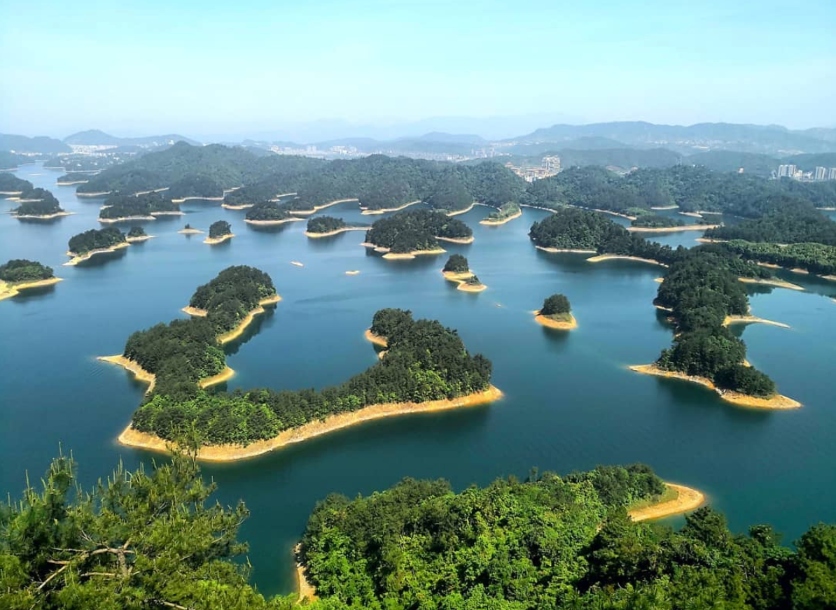
Image via @_chichile_/Instagram
Thousand-Island Lake is made up of 1,078 islets divided into six sections, with several notable sites including Longshan Island, Yule Island, Peacock Island, Stone Forest and Blossom Mountain. The 95,000-hectare plot of land wasn’t always a lake: Back in the late ’50s, the area was flooded to aid the construction of a hydropower dam on the Xin’an River. It has since flourished into a treasure trove of biodiversity, with thriving species of animals, including snakes, ostriches, peacocks and monkeys, and 1,830 species of plants. With crystal clear water and countless places to explore, it is a must-see when in Zhejiang province. And honestly, while this might be an unpopular opinion – West Lake is way overrated.
Where: Chun’an county, Hangzhou
Best time to go: Fall and winter
Why bother: Because every damn tourist in Hangzhou goes to West Lake, and you’re not like other travelers
Entrance fee: RMB110 low season, RMB130 high season, RMB65 for a boat
 For More China Travel Guides...
For More China Travel Guides...
Already dreaming about your next vacation? Check out our informative online travel guides or purchase our definitive guide to China, the 2019 Explore China guide book, on thMart for the limited time presale price of just RMB129 until August 31,2019.
[Cover image via Pixabay]
This is a place for show life about china, If these articles help you life better in china, Welcome to share this website to your friends, Or you can post questions about china life in FAQ, We will help you to find the right answer.






Recent Comments